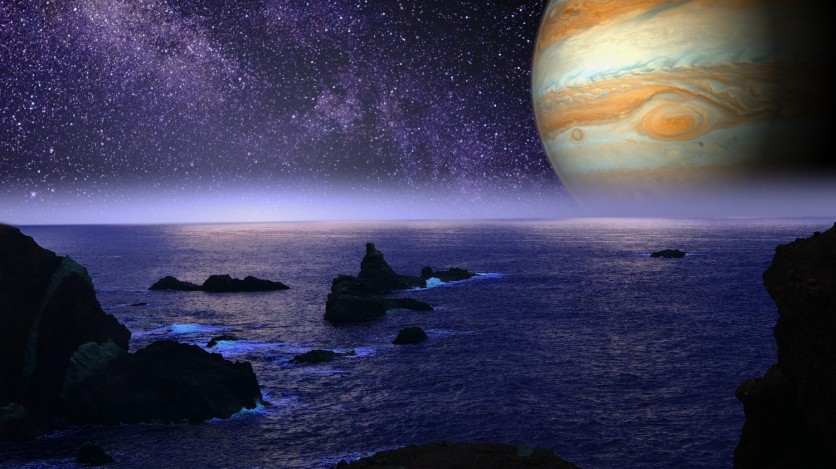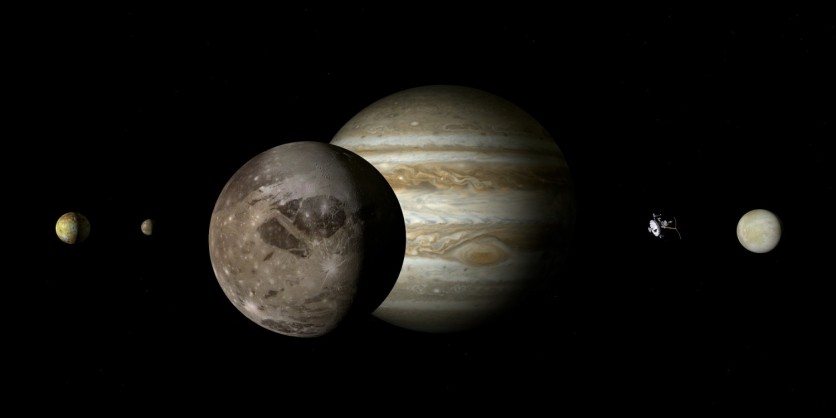
Jupiter's Great Red Spot measures a diameter twice as large as Earth and churns up winds of approximately 400mph. However, Astronomers have noted that typhoon has visibly reduced in size in the last 40 years and there is a possibility it can disappear completely one day.
A study published this week in Nature Physics has shown that typhoon's current location has reduced in recent decades. But here's a catch, according to the astronomers.
The research posted on March 17 by a group of researchers from Aix-Marseille Université in France claims the thickness of the Great Red Spot appears to have remained stable.

Because we are facing the Great Red Spot face-on from Earth, it in all simple to degree the floor dimensions of the cyclone. However, measuring the storm's thickness, shrouded via Jupiter's dense atmosphere, is trickier.
Great Red Spot of Jupiter appears to decrease in size
However, with a large plastic tank of saltwater and a motor, the researchers have simulated the violent vortex in the Red Spot.
The researchers said the storm seems to be as thick basing on NASA's Voyager probe shot past Jupiter in 1979.
The predicted horizontal dimensions, especially for the Big Red Storm, are consistent with cloud-level measurements since the Voyager operation in 1979, according to the researchers. However, researchers said the thickness of the Big Red Storm couldn't be directly detected.
In 2018, Space.com quoted NASA's warning that the Red Spot grows taller as it shrinks. The research, posted in the Astronomical Journal, discovered the storm was changing its shape, length, and color with time.
Reta Beebe from New Mexico State University in Las Cruces, who co-authored the research, said there is evidence in the archived observations that the Great Red Spot has grown and contracted over time. She noted the hurricane is pretty small now, adding that it has been a long time since it grew.
Different hurricanes happening all at once
Astronomers have been looking at upon the Great Red Spot on the account since 1831.
There is some evidence to indicate the Jovian storm was seen even earlier, but there may be a threat that might be a different hurricane happening altogether. Continuous observations of the cyclone date returned to 1878.
The 5th planet from the Sun, Jupiter, is big enough to accommodate eleven Earth's across its equator. The planet has no floor like our homeworld but is made up of numerous gases, which include hydrogen and helium.
If the gas massive has a solid inner core, NASA speculates it's far no bigger than our planet. Although the planet itself is inhabitable to life, NASA is looking to Jupiter's more than 70 moons for signs of habitability.
ALSO READ : Jupiter Moons Now Up To 79 After 10 More Confirmed, Including 1 That May Collide With Others
Juno has been exploring the planet since 2016, and it passes throughout the poles of the planet every 53 days. The huge gas large stays a supply of enigmas for many researchers. A research posted in 2019 claimed that Jupiter might have clashed with any other planet nearly 4.5 billion years ago.
ⓒ 2025 TECHTIMES.com All rights reserved. Do not reproduce without permission.




